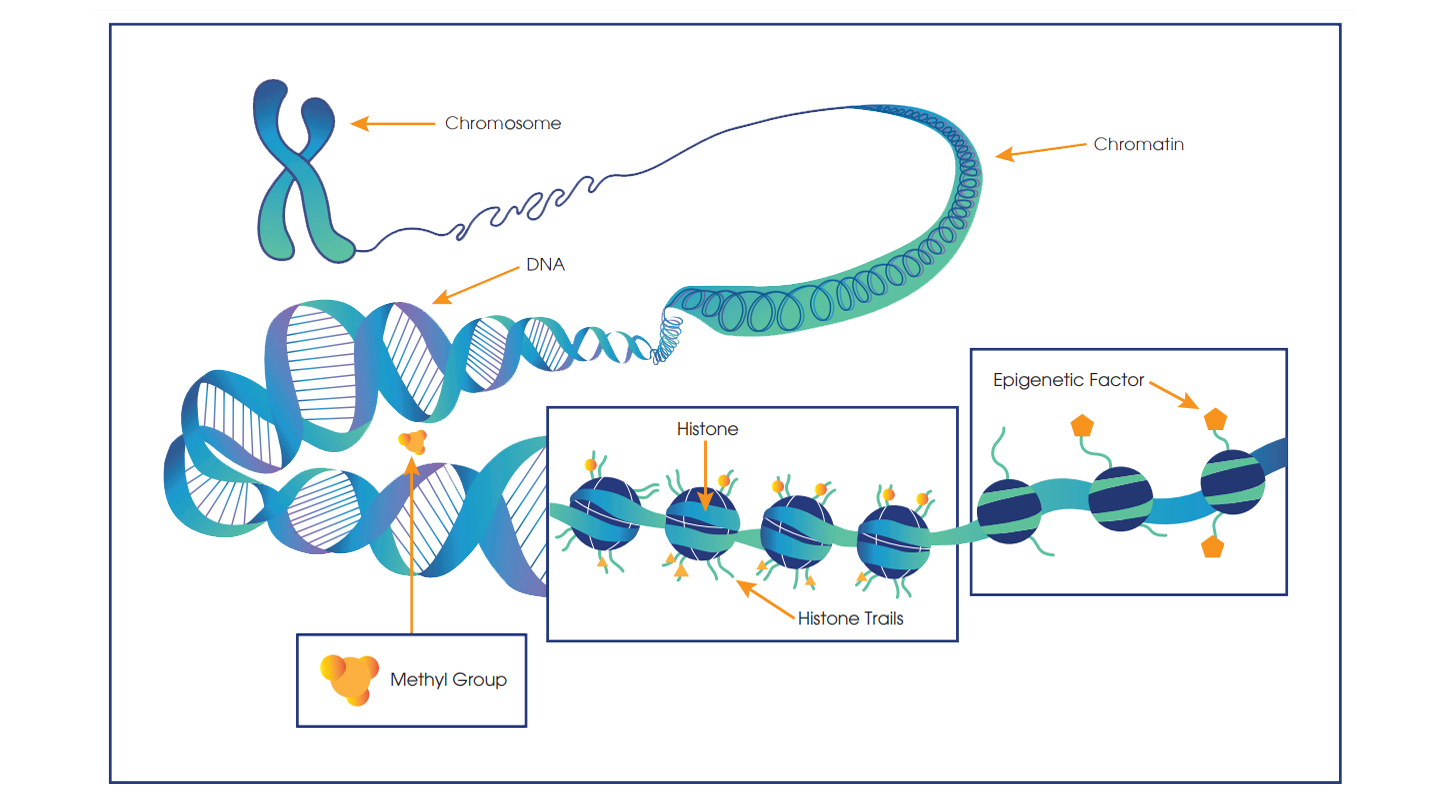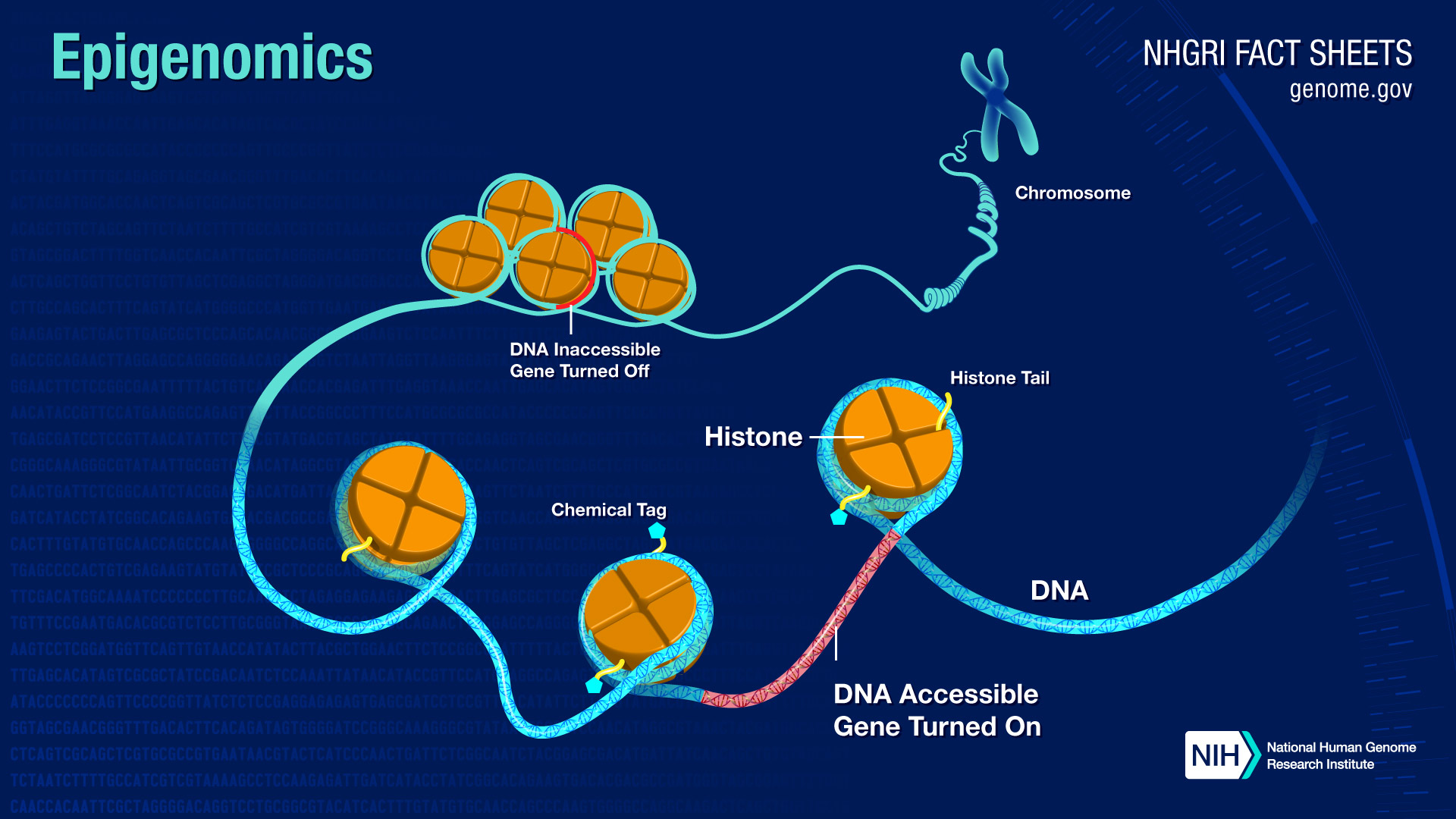Living things can be studied and classified based on their genome the protein products derived from those genetic instructions and the. The Mutations and Their Relationships with the Genome and Epigenome RNAs Editing and Evolution in Eukaryotes.
These epigenetic marks which are not part of the DNA itself can be.

. The efforts to identify the primary causes of this have significantly benefited from studies of the epigenomea dynamic layer of information associated with DNA that differs between individuals and can be altered through various experiences and environments. The epigenome is a parallel to the word genome referring to the overall epigenetic state of a cell and epigenomics refers to global analyses of epigenetic changes across the entire genome. Their differing experiences lead to distinct changes in their epigenomes and cause biological differences over time.
Unlike genetic changes epigenetic changes are reversible and do not change your DNA sequence but they can change how your body reads a. Epigenetic changes alter the physical structure of DNA. Early life experiences exert a profound and long-lasting influence on physical and mental health throughout life.
Conrad Waddington 1905-1975 is often credited with coining the term epigenetics in 1942 as the branch of biology which studies the causal interactions between genes and their products which bring the phenotype into being. The main difference between genetics and epigenetics is that genetics is the study of genes that control the functions of the body whereas epigenetics is the study of inheritable changes of the organisms caused by the modification of gene expression. What theyve learned is helping them explain differences that can appear over time in identical twins and more broadly.
Because epigenetic changes help determine whether genes are turned on or off they influence the production of proteins in cells. The most widely characterized DNA methylation process is the covalent addition of the methyl group at the 5-carbon of the cytosine ring resulting in 5. The term epigenome is derived from the Greek word epi which literally means above the genome.
Epigenetics is the study of how the environment and other factors can change the way that genes are expressed. The epigenome is a multitude of chemical compounds that can tell the genome what to do. Despite large-scale genomic efforts DNA mutations do not fully explain malignant evolution.
June 27 2012 Posted by DrSamanthi. The key difference between gene and genome is that gene is a specific fragment of DNA that codes for a protein while genome is the entire collection of DNA of an organism that contains the entire genetic information. Genetic distance is used to explain the genetic divergence between species or between populations within a species and can indicate how closely related they are and whether they have a recent common ancestor or recent interbreeding has taken place.
Within the complete set of DNA in a cell genome all of the modifications that regulate the activity expression of the genes is known as the epigenome. The genome is a complete set of genetic material of the organism essentially its blueprintthe epigenome is the way that genome is modified chemically and how it is packaged which defines how. Each species has a unique set of inherited characteristics that make them different from each other.
While epigenetic changes do not alter the sequence of a. And the more we learn about the epigenome the more important it becomes in helping to explain the differences between diseased and normal cells. The human genome is the complete assembly of DNA deoxyribonucleic acid-about 3 billion base pairs - that makes each individual unique.
Epigenetics is the study of how your behaviors and environment can cause changes that affect the way your genes work. Genes are the basic units of heredity that pass genetic information over generations. Here we study the coevolution of the genome and epigenome of colorectal tumours at single-clone.
The exponential advances in the technologies and informatics tools Figure 1 for generating and processing large biological data sets omics data is promoting a paradigm shift in the way we approach biomedical problems The opportunities provided by investigating health and disease at the omics scale come with the need for implementing a. This also helps explain why identical twins arent actually identical. The epigenome consists of chemical compounds that modify or mark the genome in a way that tells it what to do where to do it and when to do it.
DNA methylation is an epigenetic mechanism that occurs by the addition of a methyl CH 3 group to DNA thereby often modifying the function of the genes and affecting gene expression. The prediction performance between human IMR90 and human ES is better than the prediction between species suggesting that common subset of chromatin marks explain genome shapes of different cell types in the same species. If we had the same epigenome as a mouse wed have a.
One example of an epigenetic change is DNA methylation the addition of a methyl group or a chemical cap to part of the DNA molecule. Epigenetics appears in the literature as far back as the mid 19th century although the conceptual origins date. Despite large-scale genomic efforts DNA mutations do not fully explain malignant evolution.
A genome is the complete genetic sequence of an organism. Epigenome Shapes the physical structure of the genome - Epigenome tightly wraps INACTIVE genes making them unreadable - Epigenome relaxes ACTIVE genes making them easily accessible The DNA code vs. Within individual myopathy patients the overall mtDNA methylation pattern correlated well between muscle and skin fibroblasts.
Jirtle speculates that developmental differences between organisms lies principally in epigenetic modifications not DNA sequences. About 80 percent of. Colorectal malignancies are a leading cause of cancer death.
Different cells have different epigenetic marks. The epigenome tells cells what they will be and how they will function. There is no significant performance difference between training on human ES vs.
Epigenome DNA Code remains fixed for life Epigenome flexible Factors from the environment interact with the epigenome affecting gene expression. Most of the genome size difference appears to lie in the noncoding DNA. The blueprint for the cellular proteome which in concert with the environment determines the metabolic capabilities of the cell.
The mtDNA methylation patterns of the four healthy muscle biopsies were highly consistent and showed intriguing tissue-specific differences at particular cytosines with control skin fibroblasts cultured in vitro.

Single Cell Genomics And Epigenomics Technologies And Applications In Plants Trends In Plant Science

Epigenetics The Genome And Its Environment Encyclopedia Of The Environment

Understanding The Relationship Between Genome And Epigenome And Their Download Scientific Diagram

Above The Genome How Epigenetics Influences Cancer And Obesity Technology Networks

0 Comments